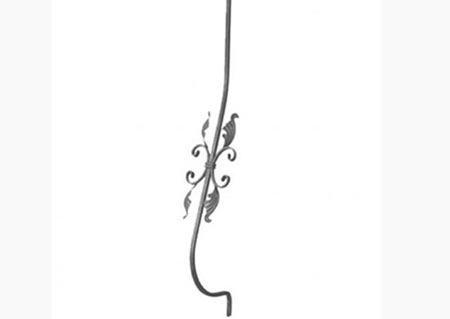What is the difference between wrought iron and wrought steel?
Views: 568 Update date: Nov 07,2024
Wrought iron and wrought steel are both materials that have been shaped through deformation processes, but they differ in composition, properties, and typical applications. Here are the key differences:
Composition
- Wrought Iron:
Wrought iron contains a very low carbon content (usually less than 0.08%) and is primarily composed of iron with fibrous inclusions of slag. This gives it a unique grain structure.
- Wrought Steel:
Wrought steel generally has a higher carbon content (ranging from about 0.1% to 2% or more) and may contain other alloying elements such as manganese, nickel, and chromium. The specific composition can vary widely depending on the intended use.
Properties
- Wrought Iron:
- Ductile and malleable, allowing for easy shaping and forging.
- Excellent corrosion resistance due to the presence of slag inclusions, which create a protective layer.
- Low tensile strength compared to wrought steel.
- Wrought Steel:
- Higher tensile strength and hardness compared to wrought iron, making it suitable for structural applications.
- More versatile in terms of heat treatment processes, which can enhance its mechanical properties.
- Slightly less resistant to corrosion compared to wrought iron, though this can be improved with coatings or alloying.

Applications
- Wrought Iron:
Historically used for decorative applications such as gates, fences, and railings, as well as in older construction methods. It is valued for its aesthetic appeal and workability.
- Wrought Steel:
Commonly used in construction, automotive, and manufacturing industries due to its strength and durability. It is used for beams, frames, tools, and other structural components.
In summary, while both wrought iron and wrought steel are malleable metals shaped through similar processes, they differ significantly in their chemical composition, mechanical properties, and typical applications. Wrought iron is prized for its appearance and corrosion resistance, while wrought steel is favored for its strength and versatility.
Prev News: How can you tell if wrought iron is vintage?
Next News: What is the difference between wrought iron and normal iron?
